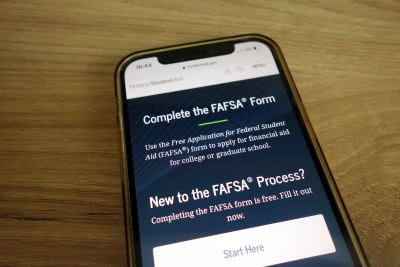Paying for college can feel overwhelming, but financial aid opportunities like grants and scholarships can make a huge difference, especially in Minnesota, where programs like North Star Promise are helping students go to college or get professional training without paying tuition. Whether you're a high school senior, a current college student, or planning to return to school, knowing where to start and how to maximize your financial aid is key.
Five tips to help you take advantage of the aid available to you
1. Research, research, research
Time is on your side when it comes to finding grants and scholarships. There are so many local, state, and national options that it can be hard to sort through the information, but if you start early, you’ll have time to put together the resources and finish your applications with plenty of time to spare.
First, check with your school counselor or financial aid office for local and national opportunities. Staff at your school have spent a lot of time connecting students to resources, and they want to help!
Second, avoid random Google searches. You may find some helpful information, or you may quickly be led in the wrong direction. Instead, use curated online scholarship databases like Fastweb, Scholarships.com, College Board Scholarship Search, or Grants.gov for federal grants. When searching, explore special interest scholarships based on your hobbies, career goals, community service, or personal traits.
2. Watch out for scams
Using specialized databases will make it easier to find what you’re looking for, and help you avoid the many scams that try to trick college applicants out of hard-earned money. Be on the lookout for services that guarantee scholarships for a fee or ask for sensitive personal information. And never pay to apply; real scholarships are always free. Here are some of the things that are a dead giveaway for financial aid fraud:
- Lists a mail drop or residential address as a return address
- Asks for up-front money for application fees
- Has typing and spelling errors
- Does not include a telephone number
- Requests personal information like your bank account or social security number
You can find out more about these types of scams here.
3. Find out if you’re eligible for the North Star Promise
Many states offer grants or tuition waivers for residents attending in-state colleges. In Minnesota, the North Star Promise offers free college tuition for students whose families earn less than $80,000 per year. The program applies to all Minnesota State Colleges and Universities, University of Minnesota campuses, and Tribal Colleges.
To qualify, you must be a Minnesota resident and report your family’s Adjusted Gross Income (AGI) on the Free Application for Federal Student Aid (FAFSA) or the Minnesota Dream Act Application. Submitting one of these forms is the only thing you need to do to access North Star Promise funding.
4. Complete the FAFSA early
The Free Application for Federal Student Aid (FAFSA) is required for federal grants like the Pell Grant and many state and institutional awards. Submit it as soon as possible when the form opens on October 1st for the following fall semester. For example. If you’re planning to attend college in fall 2026, you should apply for FAFSA starting October 1, 2025.
Also, make sure all your information (like income) is accurate to avoid delays. If you need help, ask a parent or your school counselor.
5. Look for local opportunities
Local organizations, businesses, churches, or nonprofits often have smaller scholarships with fewer applicants. If you’re already a member of a local organization, check with the staff to see if they have any scholarships. Your high school is also a great source: check for awards specific to students graduating from your school or district.
Conclusion
Figuring out financial aid doesn’t have to be overwhelming. By starting early, staying organized, and taking advantage of resources like the North Star Promise program and other Minnesota-based opportunities, you can make college more affordable and accessible.
Remember, every grant or scholarship — no matter how big or small — can help reduce your financial burden and bring you one step closer to achieving your educational goals. With persistence and planning, you’ll be well on your way to funding your future and pursuing the education you deserve. You’ve got this!
My Higher Ed Blog's Most Popular Posts
More Blog Articles You May Like

Are you heading to college this fall but haven’t completed the FAFSA yet? There is no time to waste!

The question on the top of nearly every college-bound students’ mind —how will I ever foot the bill for my college education?

There is going to be so much thrown your way over the next few months.


